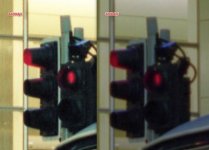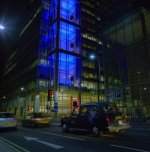MaxFrank
Member
Last year I decided it would be fun to shoot film, and that it would improve my photographic skills as one does not shoot frames away and thinks before he shoots.
Thus I first bought a Mamiya RB67, which is amazing but also extremely large. Then I bought a Bronica ETRSi which is a much more practical camera.
I also shoot 35mm on a Minolta X-700.
If I only shot 35mm the decision would be easy and I would buy an Opticfilm 7600i. Seeing as there is no affordable medium format scanner things have been complicated for me.
My main goal for the scanner is so that (after the initial investment) I have a cheaper way to review my images than the lab making poor prints of black and white film on color paper which turns the photo into a horrible mess,
and a better way to present my images than the garbage scans the lab makes which are way overpriced. So all in all I am not looking to print of these scans.
If I were to print an image from these negatives I would rather go to the expensive but professional lab nearby which does scans on an Imacon or look into the possibility of having a darkroom and doing wet printing.
When looking at reviews online it is very easy to become blinded by figures of PPI, dmax and others and just be pushed into the opinion that anything but an Imacon/Flextight X5 is rubbish and coolscan 9000 is just barely cutting it.
So far the options are limited to flatbed scanners (with the Epson v700 being the top contender and the CanoScan 9900f being the more bufget friendly option),
seeing as the opticfilm series do not scan medium format and if one such scanner would become available would probably be way too expensive for me.
What I am looking for are opinions and example from real users who can help me determine which scanner would be good for my desired purposes, I am open to new suggestions and not limited to just a comparison of the epson and the canoscan.
Thus I first bought a Mamiya RB67, which is amazing but also extremely large. Then I bought a Bronica ETRSi which is a much more practical camera.
I also shoot 35mm on a Minolta X-700.
If I only shot 35mm the decision would be easy and I would buy an Opticfilm 7600i. Seeing as there is no affordable medium format scanner things have been complicated for me.
My main goal for the scanner is so that (after the initial investment) I have a cheaper way to review my images than the lab making poor prints of black and white film on color paper which turns the photo into a horrible mess,
and a better way to present my images than the garbage scans the lab makes which are way overpriced. So all in all I am not looking to print of these scans.
If I were to print an image from these negatives I would rather go to the expensive but professional lab nearby which does scans on an Imacon or look into the possibility of having a darkroom and doing wet printing.
When looking at reviews online it is very easy to become blinded by figures of PPI, dmax and others and just be pushed into the opinion that anything but an Imacon/Flextight X5 is rubbish and coolscan 9000 is just barely cutting it.
So far the options are limited to flatbed scanners (with the Epson v700 being the top contender and the CanoScan 9900f being the more bufget friendly option),
seeing as the opticfilm series do not scan medium format and if one such scanner would become available would probably be way too expensive for me.
What I am looking for are opinions and example from real users who can help me determine which scanner would be good for my desired purposes, I am open to new suggestions and not limited to just a comparison of the epson and the canoscan.



